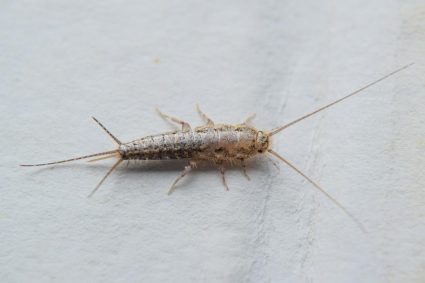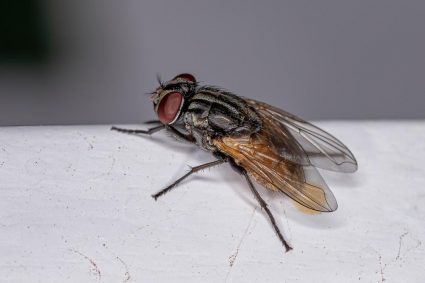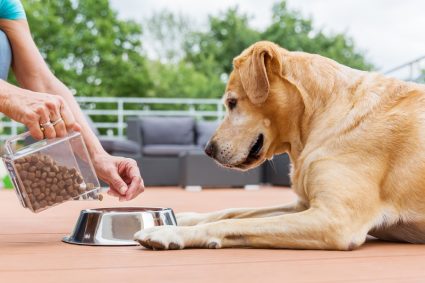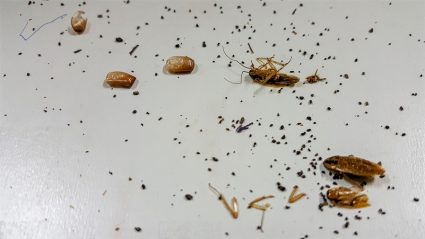
Fleas are a common pest that can infest homes, causing discomfort for both humans and pets. These tiny parasites feed on blood and can reproduce rapidly in carpets, upholstered furniture, and pet bedding. One unconventional yet effective method of getting rid of fleas in carpets is using salt. In this comprehensive guide, we’ll delve into how to use salt to eliminate fleas, why it works, and what precautions you need to take.
Get rid of fleas in your carpet with salt by first vacuuming the area thoroughly. Then, sprinkle finely ground salt evenly over the carpet, working it into the fibers with a brush or broom. Let the salt sit for at least 12 hours to 2 days to dry out and kill the fleas. Vacuum the carpet again to remove the salt and any flea remains, and dispose of the vacuum contents outside. Repeat this process two more times with a two-week interval between each treatment.
What Makes Salt an Effective Remedy for Fleas?
Salt, in its finely ground form, acts as a desiccant, meaning it absorbs moisture. When fleas come into contact with salt, it penetrates their exoskeleton and dries out their bodies, leading to their demise. This is because fleas take in oxygen through tiny tubes all over their bodies, and when they breathe in salt through these tubes, it can be lethal to them.
Step-by-Step Guide to Using Salt for Flea Removal
Here’s a comprehensive step-by-step guide to leveraging the power of salt to eliminate fleas in your carpets:
- Choose the right salt: Opt for finely ground salt or grind regular salt into a fine powder using a blender or coffee grinder.
- Prepare the area: Vacuum your carpet thoroughly to remove any loose dirt, debris, and some fleas and their eggs.
- Apply the salt: Sprinkle the finely ground salt evenly over the carpeted areas of your home. Make sure to cover corners, spots under furniture, and near doorways.
- Work the salt into the carpet: Use a brush or broom to gently work the salt into the carpet fibers. This will help the salt reach deeper into the carpet and increase its effectiveness.
- Let the salt sit: Allow the salt to sit on the carpet for at least 12 hours to 2 days. The salt acts as a desiccant, drying out and killing fleas and their larvae.
- Vacuum the carpet: After the salt has set, thoroughly vacuum the areas where you spread the salt to remove both the salt and any flea eggs or remains.
- Dispose of the vacuum contents: Throw away the vacuum bag or empty the canister outside to prevent any surviving fleas from reinfesting your home.
- Repeat the process: To ensure that you catch any new fleas that might have otherwise continued the infestation, repeat these steps two more times with a two-week interval between each treatment.
The Downside of Using Salt for Flea Removal
While salt can be an effective home remedy for fleas, there are also downsides to this method. Salt can damage carpets and other fabric surfaces if left behind, causing them to wear out. It can be difficult to avoid the treated areas for the required time and stepping or sitting on salted areas may result in tracking salt all over the house. Additionally, using saltwater baths for pets is not recommended, as it can be dehydrating and harmful to their health.
Preventing Future Flea Infestations
Prevention is always better than cure. Here are some preventive measures to avoid future flea infestations:
- Vacuum regularly: Vacuum your carpets, rugs, cushions on chairs and sofas, and other surfaces where pets frequent. Be sure to empty the vacuum bag outside when finished.
- Steam clean carpets: The hot steam and soap can kill fleas in all stages of their life cycle.
- Clean pet bedding: Wash pet bedding and family bedding on which pets lie in hot, soapy water every two to three weeks. If an infestation is severe, discard old pet bedding and replace it with fresh, clean material.
- Treat pets with preventive medication: Give your pets preventive medication or a flea collar to keep fleas out of the house and off the carpets.
- Maintain your yard: Keep your yard mowed and trim your shrubs to prevent fleas from having a place to hide. Don’t leave pet food outside, and close all openings to sheds, garages, and crawl spaces where stray animals can nest.
By following these steps, you can significantly reduce the risk of flea infestations in your carpets and maintain a clean and healthy environment for you and your pets. Remember, salt treatment for fleas is only one part of an effective flea control strategy. Always consult with a professional pest control service or use other proven methods for flea removal, such as vacuuming, steam cleaning, and using flea control products designed for carpets and upholstery.
Frequently Asked Questions
Can I use any type of salt for flea removal?
Yes, you can use any type of salt, but it should be finely ground. Regular table salt or sea salt, when ground into a fine powder, can be used effectively to eliminate fleas from your carpets.
How often should I repeat the salt treatment for fleas?
It’s advisable to repeat the process three times, with a two-week interval between each treatment. This ensures that you catch any new fleas that might have hatched or entered your home after the initial treatment.
Can the salt treatment harm my pets?
While salt can dehydrate and kill fleas, it’s generally safe for pets. However, make sure your pets do not ingest large amounts of salt as it can be harmful to them. Also, avoid using saltwater baths for pets as it can be dehydrating and harmful to their health.
Does salt kill all stages of flea life cycle?
Salt primarily kills adult fleas by dehydrating them. However, it can also have an impact on flea eggs and larvae by creating an inhospitable environment for them.
Can I use this method on upholstery and pet bedding?
Yes, you can use the salt method on upholstery and pet bedding. However, be aware that salt can potentially damage certain fabrics over time. Always test a small, inconspicuous area first to ensure the salt won’t harm the fabric.












